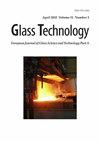Smart Airtime Vending Machine: A Case of Nyamasheke District, Nyabitekeri Sector
IF 0.3
4区 材料科学
Q4 MATERIALS SCIENCE, CERAMICS
Glass Technology-European Journal of Glass Science and Technology Part a
Pub Date : 2023-02-19
DOI:10.47672/ejt.1355
引用次数: 0
Abstract
Purpose: The aim of this paper was undertaking modern technology by designing and implementing a smart airtime vending machine known as a self-service airtime vendor machine that will come as an additional method apart from the current airtime selling and buying methods which are mobile money, banking, airtime agent that involves theft of money and airtime loading mistakes and errors. It will help rural citizens to buy airtime using a coin where a customer has to enter the mobile number using a keypad then inset coin in airtime vending machine, and automatically the machine dispenses the airtime equivalent to the amount inserted. Methodology: The methodology used consists of an IoT system where the customer will access the vending machine by inserting it into a coin to buy airtime. This research consists of three main parts, the first part is the interconnection of IoT hardware components that build the entire circuit and are linked to the cloud via GPRS/GSM communication technology, this part involves sensing components, data processing components, and actuators components. The second part consists of coding using Arduino IDE that makes IoT system hardware operational and the last part is data processing and analytics using python programming and regression as a machine learning technique. The system monitoring is done through wireless radio, the cloud data storage is secured and can be easily accessible by authorized users via a web interface. The battery is used for powering the system and the solar panel for recharging the battery. All transaction data are recorded and given date returns the day type between working days, weekends, and the session of the day. Findings: The results of the research include an IoT system that is developed and implemented to help both airtime agents and customers to sell and buy airtime using coin-based self-service airtime vending machine and the model that analyse machine transaction data using Python programming and regression as a machine learning technique. Unique contribution to practice: It improved the airtime vending system's efficiency and sustainable management of airtime agent. It facilitates safe selling and buying of airtime across the country especially in rural areas where getting airtime seemed to be a problem. The Internet is also used for linking cloud platform and application users.it indicates that the vending machine can provide positive impact in society including self-service of airtime to citizens from nearby vendors, the distribution of machines country wide can increase employability.智能通话自动售货机:以Nyamasheke区、Nyabitekeri区为例
目的:本文的目的是承担现代技术,通过设计和实施一个智能的通话时间自动售货机,称为自助服务的通话时间供应商机器,这将作为一个额外的方法,除了目前的通话时间销售和购买方法,这是移动货币,银行,通话时间代理,涉及盗窃金钱和通话时间加载错误和错误。它将帮助农村居民用硬币购买话费,用户必须使用键盘输入手机号码,然后在话费自动售货机中插入硬币,机器自动分配相当于插入金额的话费。方法:使用的方法包括一个物联网系统,客户将通过将其插入硬币来访问自动售货机以购买通话时间。本研究主要包括三个部分,第一部分是构建整个电路并通过GPRS/GSM通信技术与云连接的物联网硬件组件的互连,这一部分包括传感组件、数据处理组件和执行器组件。第二部分包括使用Arduino IDE编码,使物联网系统硬件可操作,最后一部分是使用python编程和回归作为机器学习技术进行数据处理和分析。系统监控通过无线无线电完成,云数据存储是安全的,授权用户可以通过web界面轻松访问。电池用于为系统供电,太阳能电池板用于为电池充电。所有交易数据都被记录下来,给定的日期返回工作日、周末和当天会话之间的日类型。研究结果:研究结果包括开发和实施物联网系统,以帮助通话代理商和客户使用基于投币的自助通话自动售货机销售和购买通话时间,以及使用Python编程和回归作为机器学习技术分析机器交易数据的模型。对实践的独特贡献:提高了分时售票系统的效率和分时座席的可持续管理。它促进了全国范围内通话时间的安全买卖,特别是在获得通话时间似乎是个问题的农村地区。互联网也被用于连接云平台和应用程序用户。这表明自动售货机可以为社会提供积极的影响,包括从附近的供应商那里为公民提供自助的通话时间,机器在全国范围内的分布可以提高就业能力。
本文章由计算机程序翻译,如有差异,请以英文原文为准。
求助全文
约1分钟内获得全文
求助全文
来源期刊
CiteScore
0.30
自引率
0.00%
发文量
0
审稿时长
>12 weeks
期刊介绍:
The Journal of the Society of Glass Technology was published between 1917 and 1959. There were four or six issues per year depending on economic circumstances of the Society and the country. Each issue contains Proceedings, Transactions, Abstracts, News and Reviews, and Advertisements, all thesesections were numbered separately. The bound volumes collected these pages into separate sections, dropping the adverts. There is a list of Council members and Officers of the Society and earlier volumes also had lists of personal and company members.
JSGT was divided into Part A Glass Technology and Part B Physics and Chemistry of Glasses in 1960.

 求助内容:
求助内容: 应助结果提醒方式:
应助结果提醒方式:


